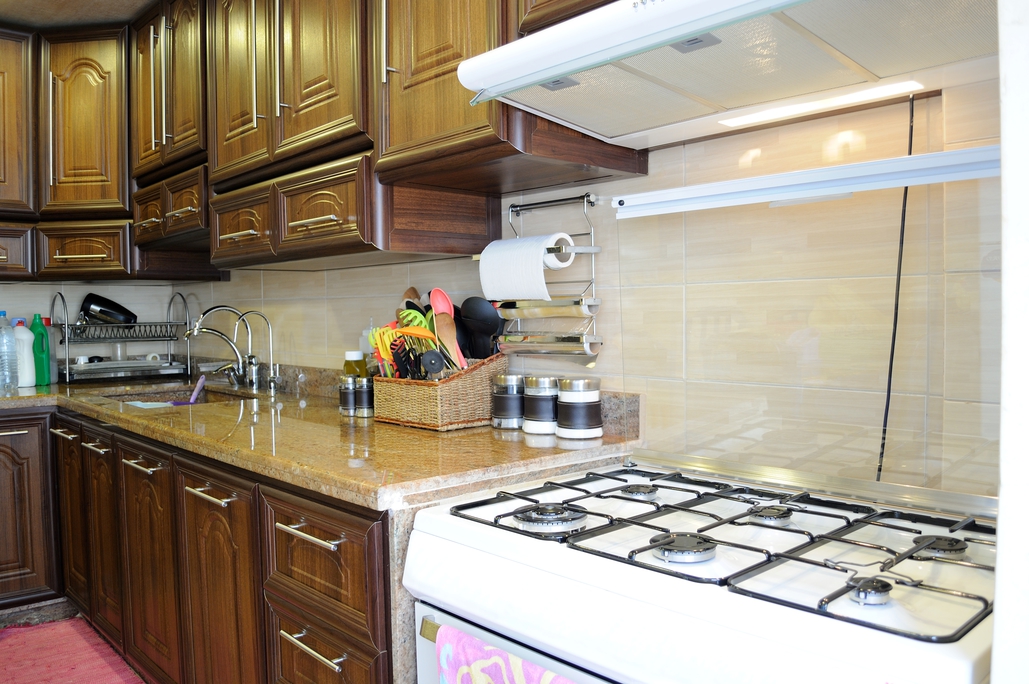When You Need Range Repair
We all have to eat, and that means we all have to prepare food. Accordingly, when a range breaks down, that’s more the inconvenient. It’s a major disruption in your home’s routine.
Fortunately, not every range malfunction needs a range repair service call to set it right. If you’re a do-it-yourselfer, you may be able to handle some of the simpler range repair issues on your own, and that’s true whether you have a gas or an electric range. Here, then, are instructions on how to tackle those problems preceded by notes on how to proceed safely.
Gas Range Repair Safety
Unplug the range. You don’t have to shut off the gas to the range to make any of range repairs described below, but don’t leave a burner dial on. You don’t want it letting gas into the room. Should you smell gas, end the flow of gas into the room by using the shutoff located behind the stove or the main supply near the meter. Then air out the room. After that, it’s time to call your local utility or a service professional for further assistance.
Gas Range Repair Problem #1: The Gas Burners Won’t Light
This is the most common gas range repair issue. There are three possible solutions.
Solution #1: Clean the Pilot or Igniter
This solves the problem a full 75% of the time and only takes a minute. First, lift up the top of your stove to get at the burners. Most stovetops (the ones on common standard pilot stoves) are hinged and lift at the back. You can give the top a bump with your hand to loosen it if it sticks.
Identifiable by the little nub (the igniter) on the back of the burners, a stove with sealed burners doesn’t have a top that will lift off. But you should still be able to do the cleaning anyway.
To find the standing pilot, look for a small tube that comes up into a hole between two burners. Note that if the pilot flame is already burning, cleaning this part won’t solve the range repair problem.
To find a standing igniter (AKA spark ignition), look for the ceramic nub either under the top or next to the burner in a sealed-burner range. If it clicks, it’s already working, and once again, cleaning it isn’t the answer to your range repair problem.
Solution #2: Clean the Burner Assembly
Try this next if cleaning the pilot or igniter didn’t work. It should only take about five minutes.
First, take the burner assembly off. It only sits in place and should slide right off the support arm as you lift and move it away from the burner valve port. For best results, get rid of the shipping screws if they still happen to be in place. (You don’t even have to put them back. They don’t do anything useful anymore.)
Now clean the burner assembly with a small diameter brush like a tube brush.
Note that if you have sealed burner stove, your cleaning will perforce be more limited as parts of the burner assembly are sealed up and out of reach. But the fact that they’re sealed means they can’t have gotten dirty anyway.
Replace the burner assembly and try lighting the burners. If they still won’t ignite and you have a standing pilot stove, experiment with raising or lowering the flame height just a little. You do this by turning the little setscrew in the main gas line that feeds the pilot. Your owner’s manual or a professional can help you identify the optimal setting.
If you have a spark ignition stove, go to Solution #3.
Solution #3: Check the Electronic Ignition
In a spark ignition stove, it’s possible for switches, control modules, or igniters to malfunction. Here’s how to test for that.
First, make sure the stove is getting power. (This is an exception to our safety rule about leaving the stove unplugged while you work on it.) You want to make sure the wall outlet is live and that a circuit breaker hasn’t been tripped. If the oven light turns on, the stove is getting electricity.
Test the switch by turning the bad burner to “Light” while simultaneously turning a functional burner to “Light.” If the formerly dead burner now comes on, it has a bad switch.
If you still haven’t identified the problem, turn on each burner in turn for three seconds, then turn it off and move on to the next. Are the igniters sparking? If none of them do, the module needs replacing.
If neither a switch nor the module is fault, you’ll probably want to call in a professional. Testing the igniters themselves (and replacing them if need be) actually isn’t easy, but a trained technician can handle the job.
If your testing reveals you need to replace a switch, remove the burner dials and any screws securing the front cover. Take off the cover, remove the wires that go to the terminals, and attach them to the same terminals on the replacement switch. You may find a pressure clamp that holds a wire in place.
To replace a module, find it by following switch wires back to their source. The module is a small box about 2 x 2 x 3 inches. Its placement varies depending on the make and model of stove. If you have trouble finding it, check the owner’s manual. You can remove it by unscrewing the screws and sliding it forward. Takes the wires off the terminals of the old module one at a time and attack them to the same locations on the replacement module. Then screw the new module in its proper place.
Gas Range Repair Problem #2: The Oven Doesn’t Heat
Does the oven have a gas stove ignition fuse? Locations vary, but the owner’s manual will tell you where it is. If the oven does have a fuse, check to see if it’s still good. If it’s not, put in a new one of the same size.
If that’s not the problem, maybe the oven has a “time cook” function. It could be set wrong, and if it is, that might keep the oven from switching on.
Or maybe the stove isn’t plugged in, or you have it plugged into a dead outlet.
Finally, check the oven’s pilot. Is it out? If it is, clean and relight it as per the manufacturer’s instructions.
A Tip on Buying Replacement Parts for Gas Range Repair
When you go to buy, you should have the brand name, model number, and serial number of the range. You can find these on an engraved plate usually located beneath the cooktop lid or on the back. You can buy parts either from a local supplier (look for “Appliance, Parts” in the Yellow Pages) or online.
Electric Range Repair Problem: A Burner Won’t Heat
Generally, fixing an electric burner repair problem doesn’t require special tools, and the solutions below work most of the time. Try them in order.
Check to see if the burner is cracked and/or pitted. If it is, replace it. (Safety tip: Always unplug a stove before removing a burner.)
Check the burner for solid connections. You do this by wiggling it in the socket and seeing if it feels loose. If it does, take it out and spread the burner terminals a little for a tighter fit. Go easy, though. You don’t want to break the heating element. Clean the socket with a wire brush, put the burner back on, plug the stove back in, and test to see if you’ve solved the problem.
Finally, if none of the above remedies worked, take another look at that burner socket. If it’s scorched or charred, it needs to be replaced. The socket either has wire leads that attack to the range wiring with ceramic wire connectors or else it has screw connections.
We hope this information has proved helpful. Remember, though, that if you live in Tampa, FL, don’t feel comfortable attempting any of these DIY range repair operations, or would simply rather not have to hassle with them yourself, you can call A Dichristopher Appliance Service. Our courteous, certified technicians will be happy to handle any range repair problem for you.


